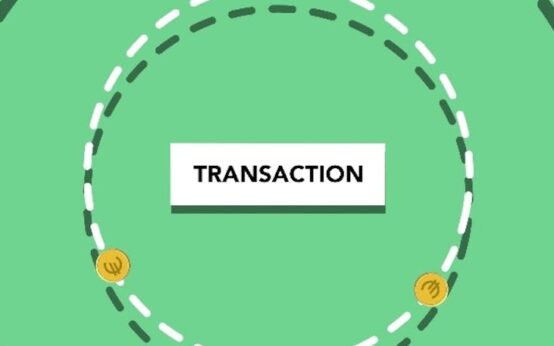Navigating the Maze of Crypto Wallets: Your Ultimate Guide
So, you’ve decided to jump into the world of cryptocurrency. Fantastic. You’ve probably heard a million terms thrown around, but one of the most critical, and often confusing, is the ‘wallet’. Before you can truly own your digital assets, you need a place to store them. This isn’t like your leather bifold, though. Understanding the different wallet types is the absolute first step to not just using crypto, but securing it. It’s the difference between keeping your money in a pocket with a hole in it and locking it away in a high-tech vault. Let’s break it all down, shall we?
Key Takeaways
- A crypto wallet doesn’t store your coins; it stores your private keys, which give you access to your coins on the blockchain.
- The main categories are Hot Wallets (connected to the internet, for convenience) and Cold Wallets (offline, for maximum security).
- Another crucial distinction is Custodial (a third party holds your keys) vs. Non-Custodial (you have full control and responsibility for your keys).
- The best wallet for you depends entirely on your goals, like frequent trading versus long-term investing.
What Exactly Is a Crypto Wallet, Anyway?
Let’s clear up a huge misconception right off the bat. A crypto wallet doesn’t hold your Bitcoin or Ethereum in the way your physical wallet holds cash. Your coins don’t actually ‘live’ anywhere except on the blockchain, which is a giant, decentralized public ledger. Think of it as a massive, shared spreadsheet that everyone can see but no one can change without the right permissions.
So, what does the wallet do? It holds your keys. Specifically, two kinds:
- Public Key: This is what you share with others to receive funds. It’s like your bank account number or your email address. You can give it out to anyone without worry. It’s generated from your private key, but it’s impossible to reverse-engineer.
- Private Key: This is the secret sauce. It’s a long, cryptographic string of characters that proves you own the crypto associated with your public key. It’s the key that signs transactions and grants access to your funds. If you lose your private key, you lose your crypto. Forever. No customer service line to call, no ‘Forgot Password’ link. It’s that serious.
Most modern wallets also give you a seed phrase (or recovery phrase) when you set them up. This is typically a list of 12 or 24 random words. This phrase is your master key; it can be used to restore your wallet and all its private keys on a new device if your old one is lost or broken. Guard it with your life.
The Big Divide: Hot Wallets vs. Cold Wallets
This is the most fundamental way to categorize the different wallet types. It all comes down to one simple question: is it connected to the internet?
Hot Wallets: The Everyday Spender
A hot wallet is any cryptocurrency wallet that is connected to the internet. Think of apps on your phone, software on your computer, or browser extensions. They are ‘hot’ because they’re online and ready to go at a moment’s notice.
Pros:
- Convenience: They are incredibly easy and fast to use. Want to send some crypto to a friend or make a trade on an exchange? A hot wallet makes it a process of seconds.
- Accessibility: You can access your funds from anywhere you have an internet connection.
- Cost-Effective: Most software-based hot wallets are free to download and use.
Cons:
- Security Risk: This is the big one. Anything connected to the internet is, by its nature, more vulnerable to hackers, malware, and phishing attacks. While reputable hot wallets have strong security, they represent a much larger attack surface than their offline counterparts.
Common Types of Hot Wallets:
- Desktop Wallets: These are software programs you install directly on your Mac or PC. They offer a good balance of features and security for a hot wallet. Examples include Exodus or Atomic Wallet.
- Mobile Wallets: These are apps on your smartphone, like Trust Wallet or Coinbase Wallet. They are perfect for on-the-go transactions and often use QR codes to make sending and receiving crypto super simple.
- Web/Browser Wallets: These live as extensions in your web browser (like Chrome or Firefox). MetaMask is the most famous example, acting as a bridge to decentralized applications (dApps) and DeFi. They are extremely convenient but are generally considered the most vulnerable hot wallet type.

Cold Wallets: The Fort Knox of Crypto
A cold wallet (or cold storage) is a wallet that is not connected to the internet. It stores your private keys completely offline, making it immune to online hacking attempts. This is the gold standard for security.
Pros:
- Maximum Security: By keeping your keys offline, you eliminate the risk of remote theft. It’s the digital equivalent of putting your gold in a Swiss bank vault.
- Peace of Mind: For long-term investors (or ‘HODLers’), a cold wallet lets you sleep at night knowing your large stash of crypto is safe from online threats.
Cons:
- Inconvenience: The process of sending crypto from a cold wallet is more involved. You have to connect the device, sign the transaction offline, and then broadcast it to the network. It’s not for quick, daily trades.
- Cost: Hardware wallets, the most popular form of cold storage, can cost anywhere from $60 to over $200.
- Physical Risk: You need to protect the physical device from loss, theft, or damage.
Common Types of Cold Wallets:
- Hardware Wallets: These are small, physical devices (often resembling a USB drive) designed specifically to store your private keys offline. When you want to make a transaction, you connect it to your computer or phone. The transaction details are sent to the device, you physically confirm it on the device’s screen, and the device signs it with your private key without ever exposing that key to the internet-connected machine. It’s a brilliant piece of security engineering. Ledger and Trezor are the two biggest names here.
- Paper Wallets: This is a more old-school method where you literally print out your public and private keys (often as QR codes) on a piece of paper. While it sounds simple, it’s now considered risky and outdated. The paper can be easily lost, damaged by water or fire, and the process of creating one securely is tricky for beginners. We generally recommend hardware wallets over paper ones today.

Another Crucial Choice: Custodial vs. Non-Custodial
Okay, you understand hot vs. cold. Now for the second layer of this onion: who actually holds the keys? This distinction is just as important, and it gets to the very heart of what cryptocurrency is all about – control.
Custodial Wallets: “Someone Else Holds the Keys”
A custodial wallet is one where a third party, like a cryptocurrency exchange (think Coinbase, Binance, or Kraken), holds and manages your private keys for you. When you buy crypto on an exchange and leave it there, you’re using a custodial wallet.
It’s very similar to how a traditional bank works. You trust the bank to hold your money, and they give you an app and a password to access it. You don’t physically hold the dollars; they do.
Pros:
- User-Friendly: They are incredibly easy for beginners. You don’t have to worry about seed phrases or private keys.
- Forgot Your Password? No Problem: Because a company is managing your account, you can usually go through a password recovery process if you get locked out.
Cons:
- You’re Not in Control: This is the fundamental trade-off. The exchange has ultimate control. They could freeze your account, get hacked, or go out of business.
- Censorship Risk: Your funds could be seized by government order or a company policy change.
There’s a famous saying in the crypto community: “Not your keys, not your coins.” It’s a powerful reminder that if you aren’t the sole holder of your private keys, you don’t truly own your cryptocurrency. You’re trusting someone else to give it back to you when you ask.
Non-Custodial Wallets: “You Are The Bank”
A non-custodial wallet is one where you, and only you, have exclusive control of your private keys and your seed phrase. All hardware wallets and most software wallets like MetaMask and Trust Wallet are non-custodial.
This embodies the core principle of decentralization and self-sovereignty that crypto was built on. You have total control over your funds.
Pros:
- Full Control & Ownership: Your funds are your funds. No one can freeze them, seize them, or prevent you from accessing them.
- Enhanced Security: When managed properly, you eliminate the risk of a third-party breach. You are not a target in a massive exchange hack.
Cons:
- Total Responsibility: This is the flip side of full control. If you lose your seed phrase, there is no one to call. Your funds are gone forever. The responsibility for security rests entirely on your shoulders.
- Steeper Learning Curve: It requires a bit more knowledge to set up and manage safely.
How to Choose the Right Wallet for You: A Practical Checklist
There is no single “best” wallet. The right choice is a mix-and-match approach based on your specific needs. Most serious crypto users have more than one wallet. Here’s how to decide:
- What’s Your Goal? Are you an active day trader? A hot wallet on an exchange (custodial) or a browser wallet like MetaMask (non-custodial) is essential for speed. Are you a long-term investor buying crypto to hold for years? A hardware wallet (cold, non-custodial) is non-negotiable for the bulk of your holdings.
- How Much Are You Storing? If you’re just playing around with $50, keeping it on a reputable exchange’s custodial wallet is probably fine. If you’re storing a significant amount of your net worth, you absolutely need a hardware wallet. The cost of the device is a tiny insurance premium.
- What Coins Do You Hold? Make sure the wallet you choose actually supports the cryptocurrencies you want to store. Most modern wallets are multi-currency, but it’s always worth double-checking.
- What’s Your Technical Comfort Level? Be honest with yourself. If the idea of managing a 24-word seed phrase terrifies you, maybe start with a trusted custodial solution and work your way up to a non-custodial wallet as you learn more.
A common and highly recommended strategy is to use both: keep a small amount of ‘spending crypto’ in a convenient mobile hot wallet for quick transactions, and store the majority of your assets securely in a hardware cold wallet.

Best Practices for Wallet Security (Don’t Skip This!)
Regardless of which of the different wallet types you choose, following these security rules is critical.
- Guard Your Seed Phrase: Write it down on paper (or stamp it in metal). Store it in multiple, secure, private locations. Never, ever store it as a digital file, screenshot, or in a password manager. This is your ultimate backup.
- Use Strong, Unique Passwords: For any wallet application or exchange account, use a password that is long, complex, and not reused anywhere else.
- Enable Two-Factor Authentication (2FA): Always enable 2FA on any exchange or service that offers it. Use an app like Google Authenticator over SMS-based 2FA if possible.
- Beware of Phishing: Double- and triple-check URLs. Be suspicious of unsolicited emails or DMs asking for your information. Scammers are incredibly sophisticated.
- Start With a Test Transaction: When sending funds to a new address for the first time, send a very small amount first to confirm it arrives safely before sending the full amount.
- Keep Everything Updated: Make sure your wallet software, hardware wallet firmware, and your computer’s operating system are always up to date to protect against the latest vulnerabilities.
Conclusion
Choosing a wallet is one of the most important decisions you’ll make in your crypto journey. It’s not just about storage; it’s about security, control, and aligning your tools with your intentions. Don’t be intimidated by the options. Start by understanding the core differences: hot wallets for convenience, cold wallets for security. Custodial for ease of use, non-custodial for total control. By matching your wallet strategy to your investment strategy, you can navigate the exciting world of digital assets with confidence and peace of mind.
FAQ
Can I use more than one type of wallet?
Absolutely! In fact, it’s highly recommended. A common strategy is to use a hot wallet (like a mobile or web wallet) for small, everyday transactions and a cold hardware wallet to secure the majority of your assets for the long term. This gives you the best of both worlds: convenience and security.
What happens if I lose my hardware wallet?
If you lose your physical hardware wallet device, you do not lose your crypto, as long as you have your seed phrase (recovery phrase) safely backed up. You can simply buy a new hardware wallet (from the same or even a different brand), and use your seed phrase to restore full access to all your funds. This is why protecting your seed phrase is even more important than protecting the device itself.



 AI and Blockchain: A Powerful Tech Synergy
AI and Blockchain: A Powerful Tech Synergy  Get a Job in Blockchain: Your 2024 Web3 Career Guide
Get a Job in Blockchain: Your 2024 Web3 Career Guide  How Venture Capital is Shaping the Crypto Industry
How Venture Capital is Shaping the Crypto Industry  Sentiment Analysis for Crypto: A Trader’s Ultimate Guide
Sentiment Analysis for Crypto: A Trader’s Ultimate Guide  NFTs: The New Key to Membership & Brand Loyalty | Guide
NFTs: The New Key to Membership & Brand Loyalty | Guide  Polkadot’s Parachain Architecture Explained Simply
Polkadot’s Parachain Architecture Explained Simply  AI and Blockchain: A Powerful Tech Synergy
AI and Blockchain: A Powerful Tech Synergy  Get a Job in Blockchain: Your 2024 Web3 Career Guide
Get a Job in Blockchain: Your 2024 Web3 Career Guide  How Venture Capital is Shaping the Crypto Industry
How Venture Capital is Shaping the Crypto Industry  Sentiment Analysis for Crypto: A Trader’s Ultimate Guide
Sentiment Analysis for Crypto: A Trader’s Ultimate Guide  NFTs: The New Key to Membership & Brand Loyalty | Guide
NFTs: The New Key to Membership & Brand Loyalty | Guide  Polkadot’s Parachain Architecture Explained Simply
Polkadot’s Parachain Architecture Explained Simply